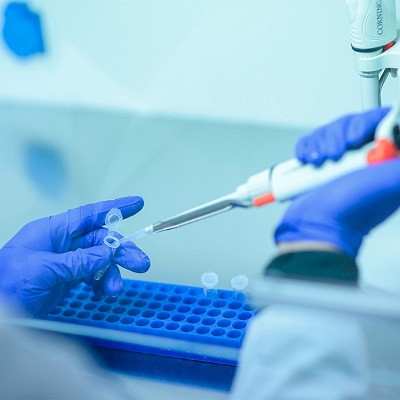
2021-12-12
Visited : 2231
Canadian and American researchers have discovered a new mechanism by which membrane vesicles are made. These self-contained nanoparticles trap proteins, RNA and other molecules from inside or outside of living cells as nutrients or regulate the numbers of cell surface hormone receptors, such as those for insulin, to control the sensitivity of cells to hormones.
They also deliver protein hormones to the surface of cells where they are released into the surroundings to act on cells at a distance. These processes are essential to the normal function of our cells and disfunctions are implicated in several diseases, including cancers, heart disease and neuropsychiatric disorders. Finally, it is the mechanism by which nanoparticles encapsulating mRNA vaccines are taken up into cells.
In their study published in the journal Proceedings of the National Academy of Sciences, the researchers discovered that endocytosis, the process by which molecules are transported into cells, begins by the formation of a 'biomolecular condensate'. Biomolecular condensates are a recently discovered ordering of proteins and RNA into liquid droplets, reminiscent of oil droplets in water. In the initial stages of endocytosis, specific proteins coalesce at nucleation sites on the membrane of the cell, a bilayer structure of phospholipid molecules, like detergent molecules that form the soap-bubble-like structure of cell membranes. Over several seconds a condensate grows on the surface of the membrane, like dew on the surface of glass. At a critical moment the cell membrane buckles and invaginates into the condensate, ultimately being pinched off to form a spherical vesicle. How membrane buckling occurs has been a mystery, but the researchers thought that the endocytic condensate could be the key.
To understand how endocytosis could be initiated by a biomolecular condensate, first author Louis-Philippe Bergeron-Sandoval of Université de Montréal reasoned that membrane buckling must have something to do with the material properties of the condensate. "We thought that some combination of properties, including the adhesiveness of its surface, and viscousness and elasticity of the condensate, must generate a force on the membrane, causing it to buckle", said Dr. Bergeron-Sandoval. Working with collaborators Allen Ehrlich and Adam Hendricks at McGill University, he used a method called optical trap microrheology to determine these viscoelastic properties of the endocytic condensate. With this knowledge, Dr. Bergeron-Sandoval constructed a mathematical model to explain precisely how the endocytic condensate forces the membrane to bend into the condensate to form a nascent vesicle.
"Our model can be thought of by a mechanical analogy," said the study's lead author, UdeM biochemist Stephen Michnick. "Imagine a flexible rubber membrane stuck to the surface of an expanding rubber balloon, filled with a viscoelastic liquid. As the balloon expands, its volume must remain constant, so the rubber membrane is sucked into the balloon, displacing the volume gained as the balloon expands. Added co-lead author Rohit Pappu, a bioengineer at Washington University in St. Louis: "Prior to our first presentations of our model in 2017, those in the field of biomolecular condensates were focused on how these bodies concentrated proteins and RNA to perform specific functions. Our study demonstrates that an emergent property of biomolecular condensates is to act as 'mechanoactive devices', able to do work on other materials to shape and organize living cells."
Much work lies ahead to confirm and extend the mechanoactive role of biomolecular condensates in other vesicle and membrane-bending processes that shape the cell and transport materials in and out. The proteins that make up the endocytic condensate are related to others that are implicated in neurodegenerative diseases and cancers. Mutations of these proteins change the material properties of condensates that they form and it is thought that these changes may be the cause of disease. Efforts are now underway to develop drugs that prevent or reverse these changes.
Read the original article on University of Montreal.